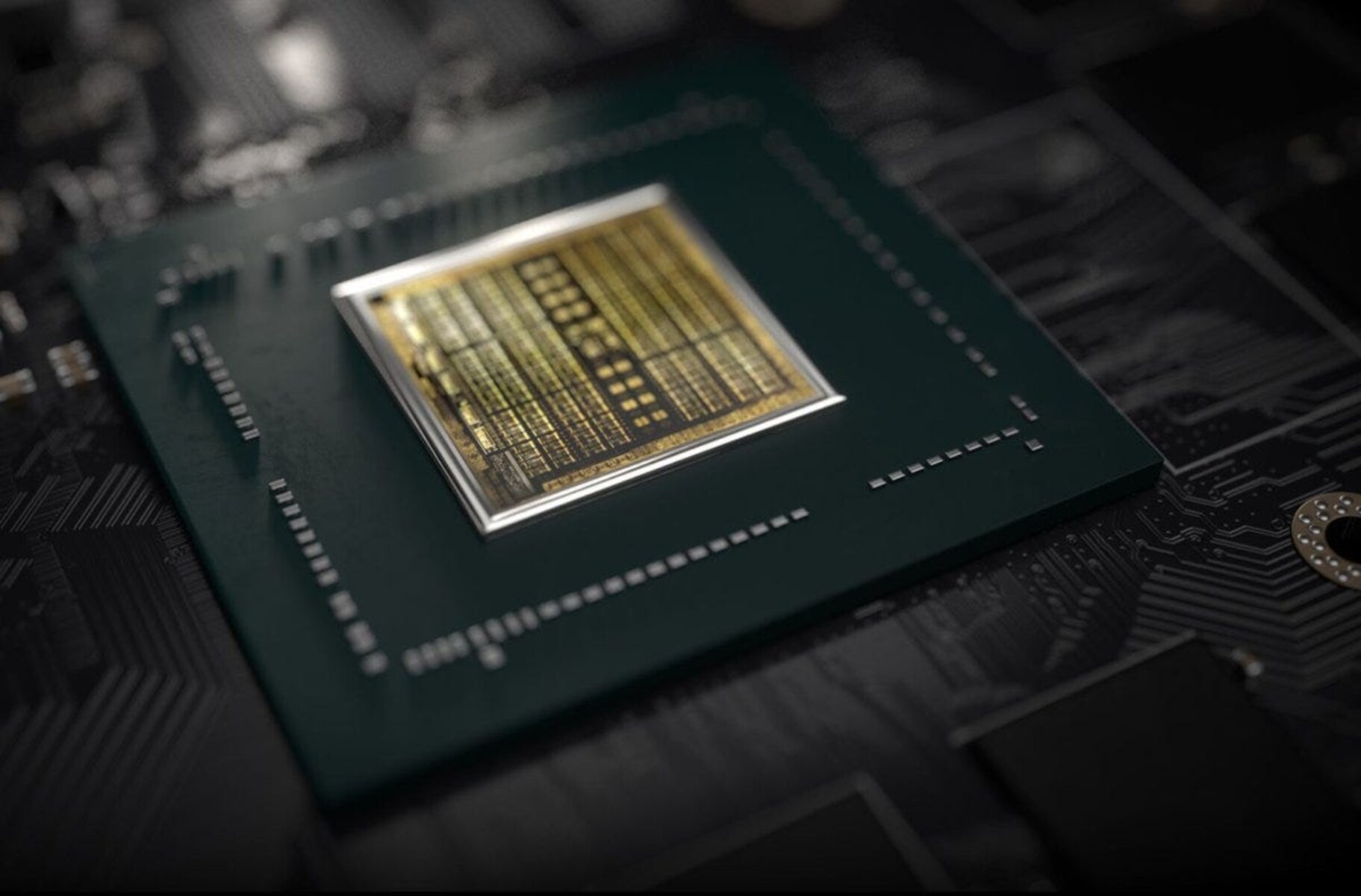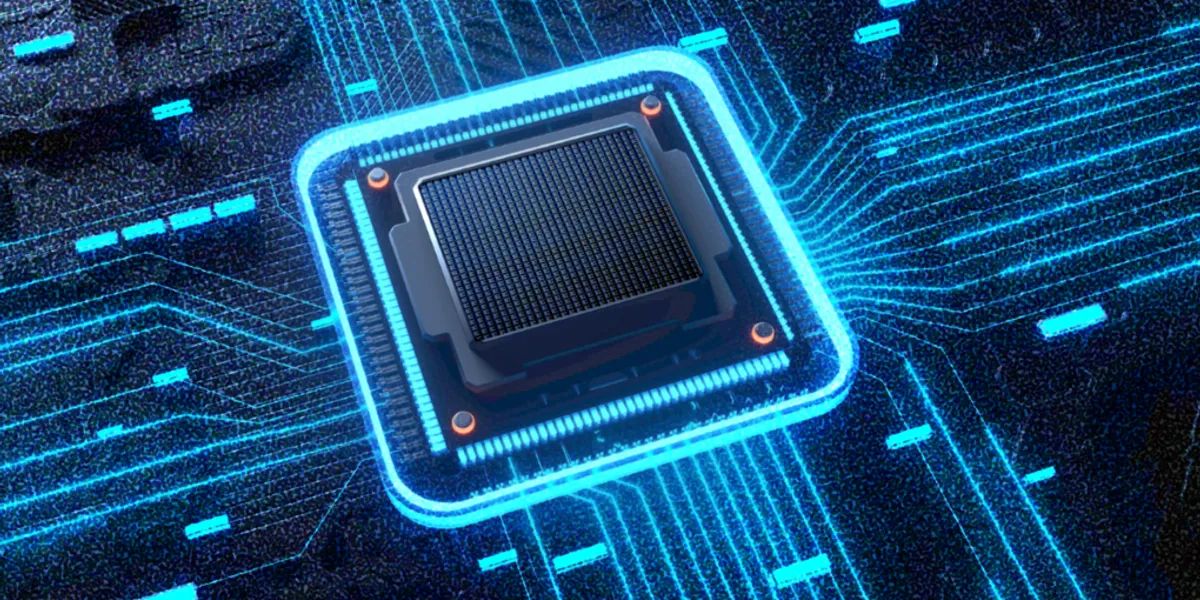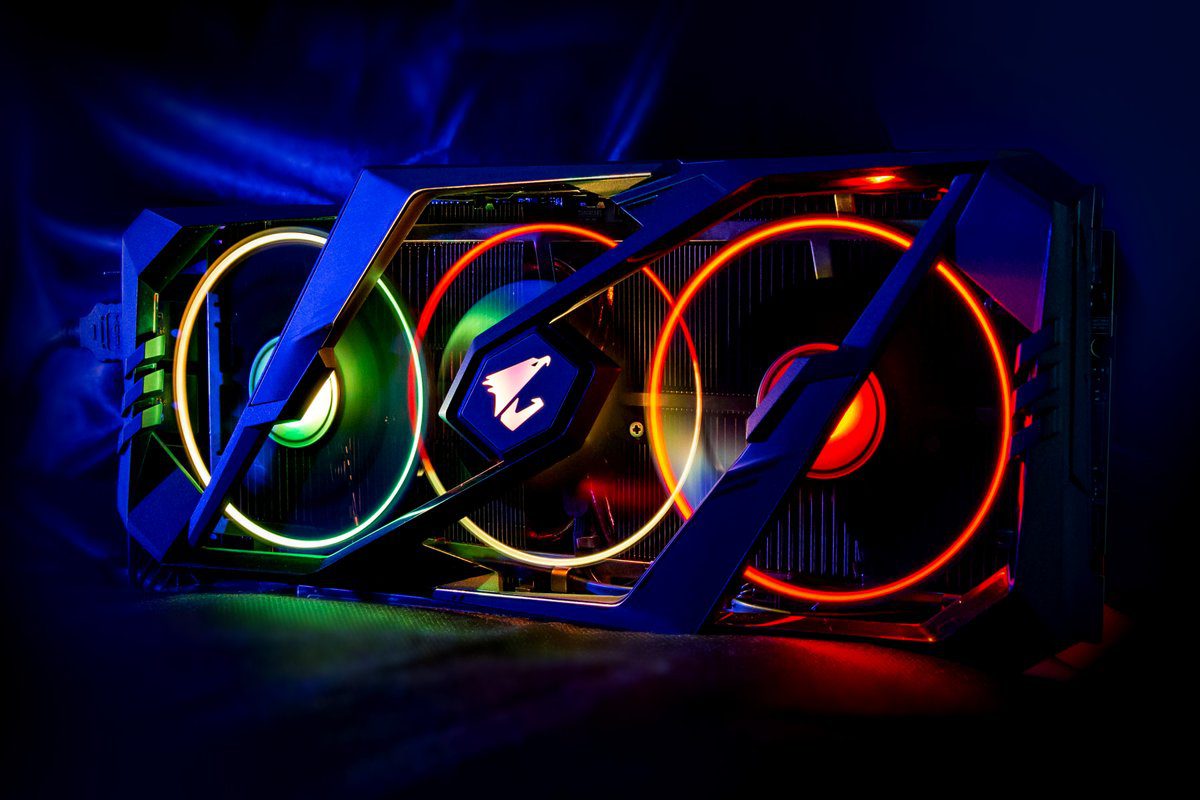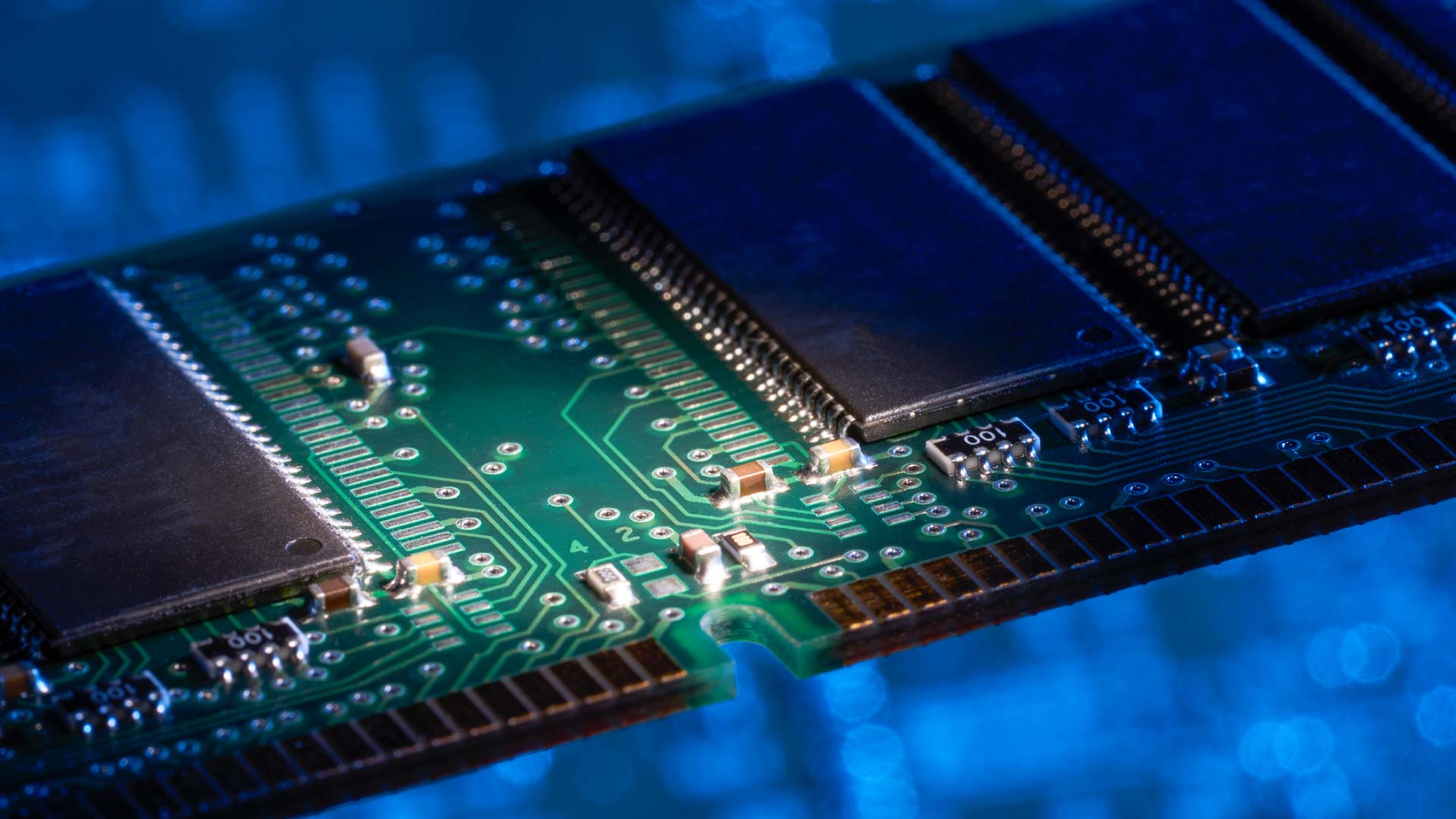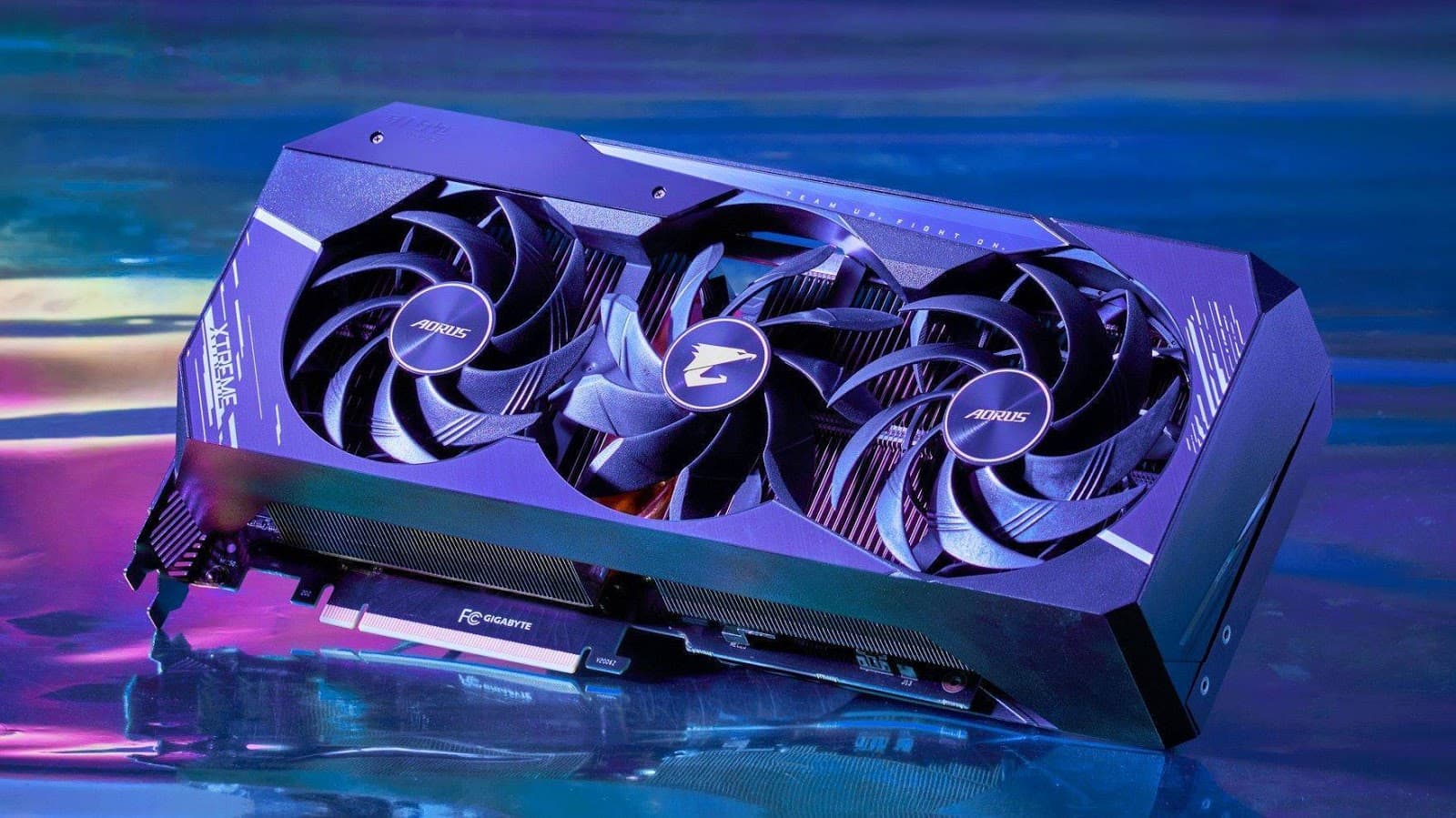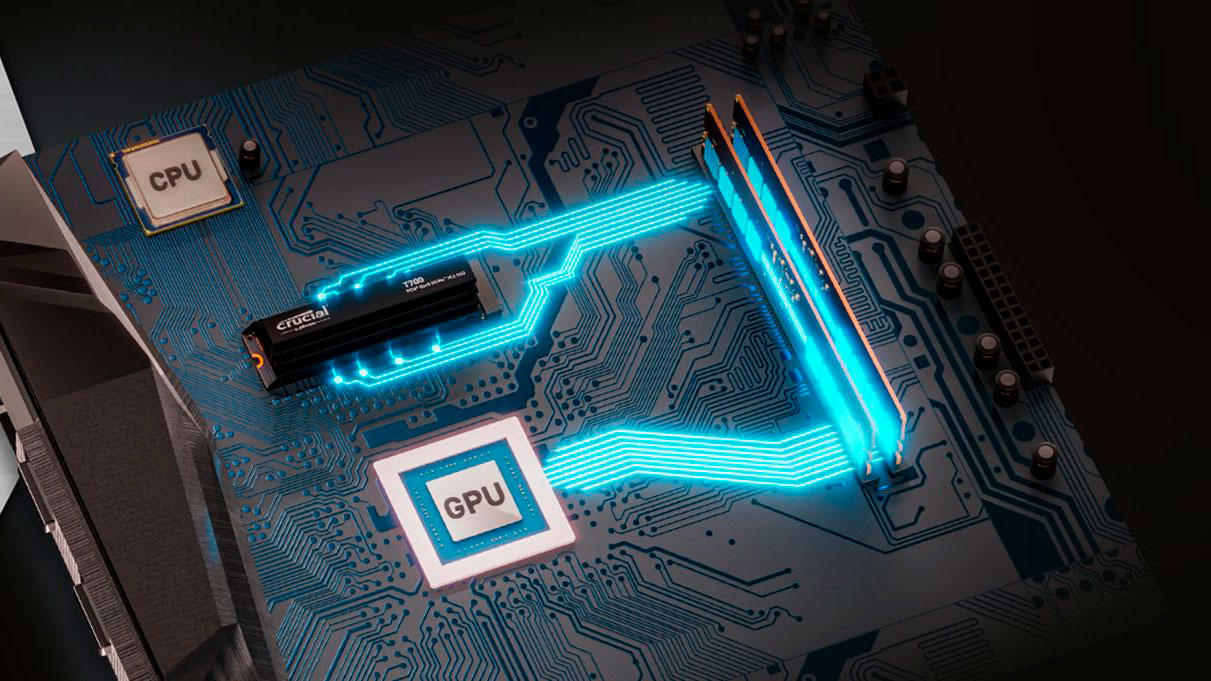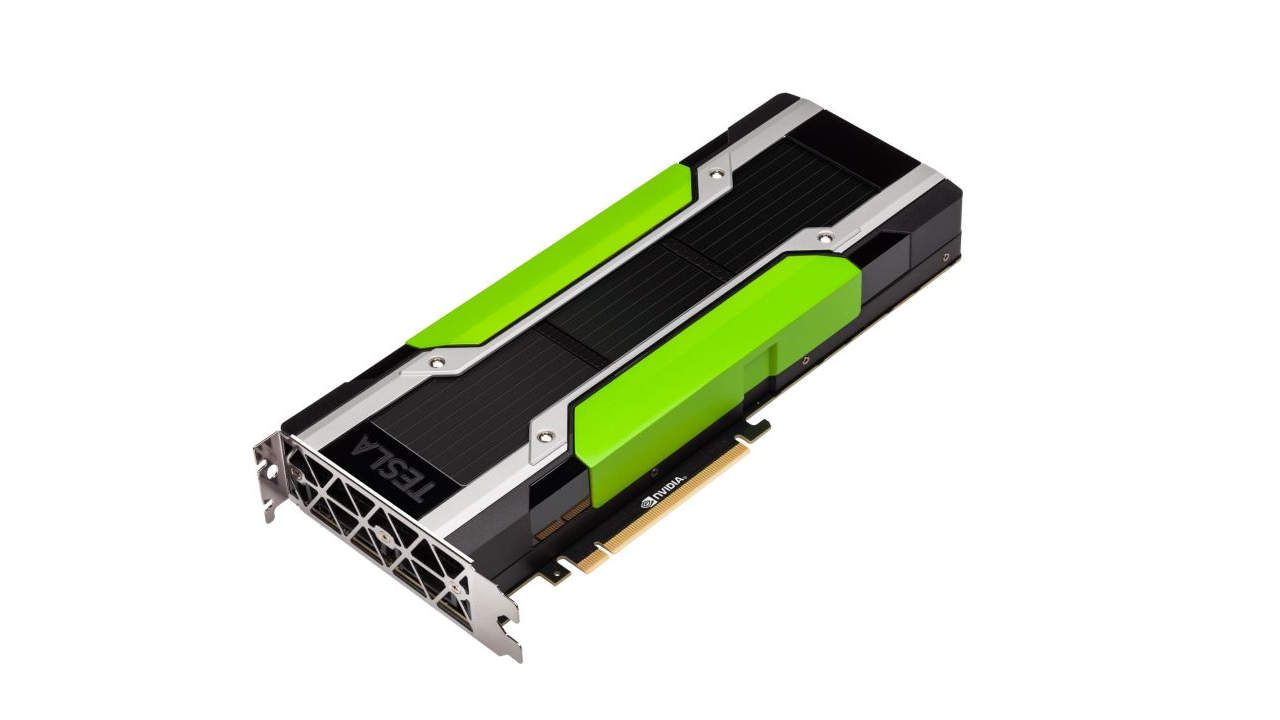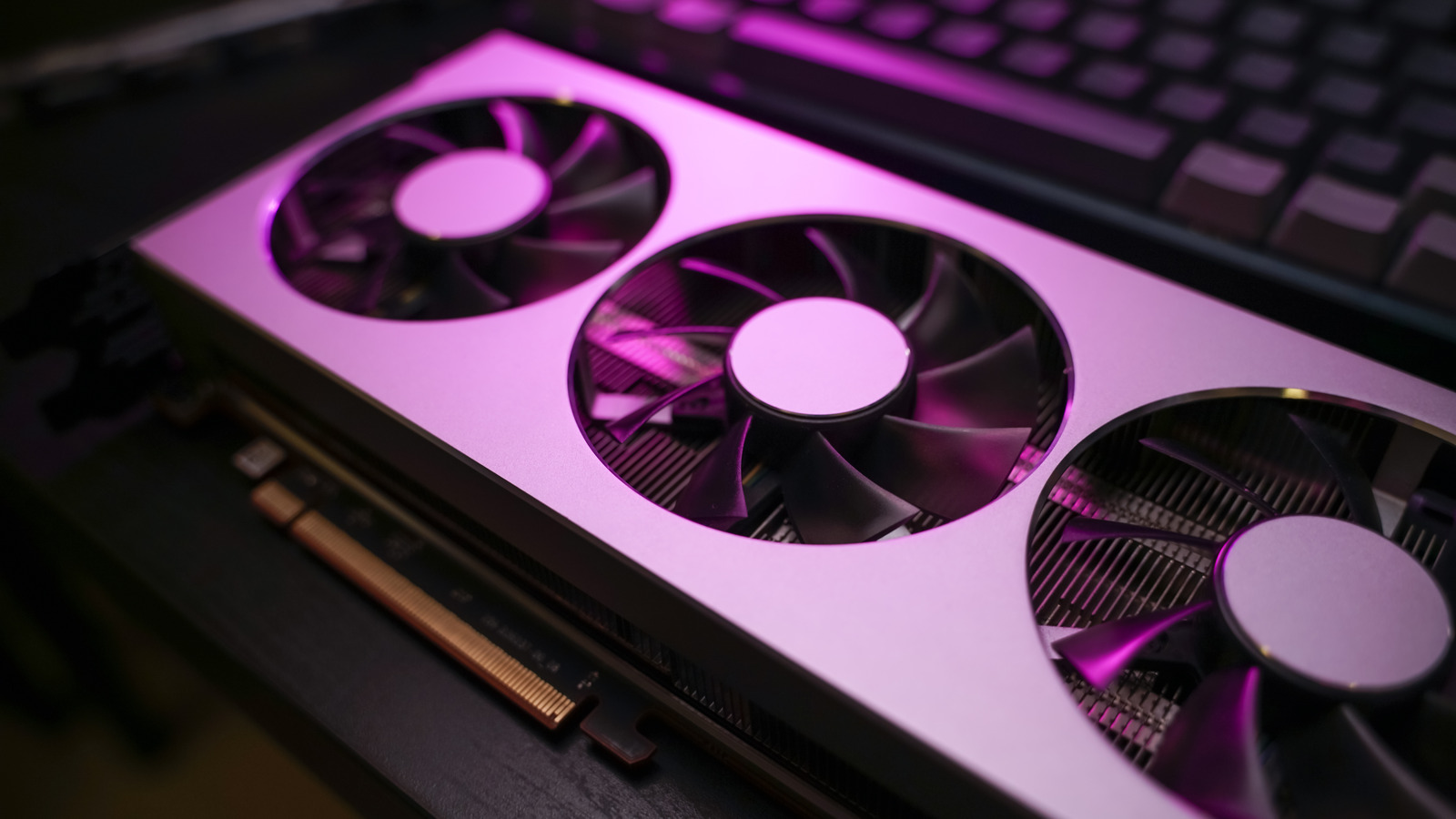Introduction
Welcome to the ever-evolving world of machine learning! In recent years, this revolutionary technology has garnered significant attention for its ability to analyze vast amounts of data and make accurate predictions. Machine learning algorithms have found applications in various fields, including healthcare, finance, and marketing, to name just a few. However, as the complexity of the models and datasets grows, so does the need for more powerful computational resources.
Enter the Graphics Processing Unit (GPU), a powerhouse of parallel processing capabilities originally designed to render complex graphics for video games and 3D applications. But now, GPUs are leaving their mark in the realm of machine learning as well.
But what exactly is machine learning? At its core, machine learning is a subfield of artificial intelligence that enables computers to learn from and make predictions or decisions based on patterns in data. Traditional machine learning models require extensive computation, especially when dealing with large datasets. This is where GPUs come into play.
So, why should you use a GPU for machine learning? Well, let’s dive into the benefits that GPUs bring to the table.
What is Machine Learning?
Machine learning is a branch of artificial intelligence that focuses on the development of algorithms and models that enable computers to learn and make predictions or decisions without being explicitly programmed. It involves teaching computers to recognize patterns and relationships in data, and use that knowledge to make informed decisions or predictions.
There are three main types of machine learning: supervised learning, unsupervised learning, and reinforcement learning.
In supervised learning, the algorithm is trained on a labeled dataset, where the input data is paired with the correct output or target variable. The algorithm learns from these examples and can then make predictions on new, unseen data. This type of learning is commonly used for tasks such as image recognition, speech recognition, and sentiment analysis.
Unsupervised learning, on the other hand, deals with unlabeled data, where the algorithm must find patterns and structures in the data on its own. This type of learning is often used for tasks such as clustering, anomaly detection, and dimensionality reduction.
Reinforcement learning is a type of learning where an algorithm learns through trial and error. The algorithm interacts with an environment and receives feedback in the form of rewards or punishments based on its actions. Over time, the algorithm learns to make decisions that maximize the rewards and minimize the punishments.
Machine learning algorithms rely heavily on computational power to process and analyze large amounts of data. As the complexity of models and datasets increases, so does the need for advanced computational resources. This is where the use of GPUs in machine learning becomes highly beneficial.
What is a GPU?
A Graphics Processing Unit (GPU) is a specialized electronic circuit that is originally designed to handle and render complex 3D graphics and imagery. It is commonly found in graphics cards, gaming consoles, and mobile devices. However, GPUs are not limited to the realm of graphics; they have become indispensable in various fields, including machine learning.
GPUs are built with parallel processing in mind. Unlike Central Processing Units (CPUs), which are optimized for sequential execution of tasks, GPUs excel at performing multiple calculations simultaneously. This parallel processing capability makes GPUs highly efficient in handling large computations required for machine learning tasks.
Generally, a GPU consists of thousands of smaller processing units called CUDA cores or stream processors. These cores work together to perform computations in parallel, significantly speeding up the processing time. With hundreds or even thousands of cores working simultaneously, GPUs can tackle complex mathematical operations required in machine learning algorithms with remarkable efficiency.
Another crucial aspect of GPUs is their high memory bandwidth. Memory bandwidth refers to the rate at which data can be transferred from the GPU’s memory to the processing cores. GPUs are designed with a wide memory bus, allowing data to be rapidly accessed and processed. This high memory bandwidth is crucial for handling large datasets in machine learning.
In addition, GPUs are highly programmable, allowing developers to harness their computing power using specialized programming languages and frameworks. One popular language is CUDA (Compute Unified Device Architecture), developed by NVIDIA, which enables developers to write code directly for the GPU.
Overall, GPUs provide a significant advantage in terms of processing power and memory bandwidth compared to CPUs. Their parallel processing capabilities and high memory bandwidth make them an ideal choice for computationally demanding tasks such as machine learning.
Why Use GPU for Machine Learning
When it comes to machine learning, the use of a Graphics Processing Unit (GPU) brings several advantages over traditional Central Processing Units (CPUs). Let’s explore why GPUs are preferred for machine learning tasks.
Speed
One of the primary reasons for using GPUs in machine learning is their exceptional speed. GPUs are optimized for parallel processing, allowing them to handle multiple calculations simultaneously. This parallelism boosts the computation speed exponentially and reduces the time required to train machine learning models.
In comparison, CPUs are designed for sequential execution of tasks, which can be limiting for machine learning algorithms that involve heavy matrix calculations. GPUs, with their thousands of cores, excel at performing these computations in parallel, resulting in significantly faster training and inference times.
Parallel Processing
Parallel processing is a crucial factor in machine learning, especially for tasks that involve large datasets and complex models. GPUs are specifically designed to handle massive parallel computations, with hundreds or even thousands of processing cores working simultaneously.
By leveraging the power of parallel processing, GPUs can process multiple data points simultaneously, significantly reducing the time required for training and inference. This capability is particularly advantageous for deep learning algorithms, which often involve training large neural networks with millions of parameters.
Cost Efficiency
In addition to their speed and parallel processing capabilities, GPUs offer cost efficiency in machine learning. GPUs are more cost-effective than CPUs when it comes to performance per dollar spent. Their ability to handle parallel computations allows for more efficient use of resources, reducing the overall infrastructure costs.
Since frequently used machine learning algorithms heavily rely on matrix calculations, CPUs might require multiple expensive cores to match the processing power of a single GPU. By utilizing GPUs, users can achieve higher computational performance at a fraction of the cost.
Deep Learning and Neural Networks
Deep learning, a subset of machine learning, has gained significant attention in recent years due to its extraordinary performance in various applications. Deep learning algorithms, which are based on artificial neural networks, require massive computational power to train complex models.
GPUs are a perfect fit for deep learning tasks as they accelerate the training process and reduce the time required to process and update the numerous parameters of the neural network. The parallel processing capabilities of GPUs enable researchers and practitioners to train deep neural networks with multiple layers more efficiently.
Furthermore, GPUs are compatible with popular deep learning frameworks such as TensorFlow and PyTorch, providing seamless integration and access to advanced optimization techniques specifically designed for GPUs.
In summary, the use of GPUs in machine learning provides significant advantages in terms of speed, parallel processing, cost efficiency, and compatibility with deep learning algorithms. With their powerful hardware and specialized programming capabilities, GPUs have become an essential tool for accelerating the training and inference of machine learning models.
Speed
One of the compelling reasons to use Graphics Processing Units (GPUs) for machine learning is their unmatched speed. GPUs are designed with parallel processing in mind, which allows them to handle multiple calculations simultaneously. This parallelism results in significantly faster training and inference times compared to traditional Central Processing Units (CPUs).
When it comes to machine learning tasks, speed is crucial, especially in scenarios where large datasets or complex models need to be processed. With GPUs, these computations can be done much more efficiently compared to CPUs.
The remarkable speed of GPUs is attributed to their architecture, built with thousands of cores that work together to process data in parallel. This parallel processing capability enables GPUs to perform matrix operations, which are fundamental to many machine learning algorithms, at an exceptional rate. As a result, training machine learning models on GPUs can be completed in a fraction of the time it would take on CPUs.
In addition to training speed, GPUs also accelerate the inference phase of machine learning models. Inference involves using the trained model to make predictions on new, unseen data. GPUs can quickly process the computations required for inference, making real-time or near real-time predictions possible.
To take advantage of the speed offered by GPUs, developers and researchers can utilize specialized machine learning frameworks and libraries that are GPU-accelerated. These frameworks, such as TensorFlow and PyTorch, provide optimized implementations of algorithms that leverage the parallel processing capabilities of GPUs, further enhancing the speed and performance of machine learning tasks.
Moreover, GPUs enable efficient model optimization, allowing researchers to experiment with different architectures and hyperparameters more quickly. The speed of GPU training cycles facilitates faster iteration and experimentation, ultimately leading to the development of better-performing models.
Overall, the speed advantage of GPUs in machine learning can’t be overstated. Their parallel processing capabilities, optimized libraries, and compatibility with popular machine learning frameworks contribute to significantly faster training and inference times. By harnessing the power of GPUs, machine learning practitioners can save substantial amounts of time, allowing them to process larger datasets, train complex models, and accelerate the deployment of machine learning applications.
Parallel Processing
Parallel processing is a key advantage of using Graphics Processing Units (GPUs) for machine learning tasks. Unlike Central Processing Units (CPUs), which excel at sequential execution of tasks, GPUs are specifically designed to handle massive parallel computations. This parallel processing capability allows GPUs to significantly enhance the performance of machine learning algorithms.
When it comes to machine learning, many tasks involve processing large amounts of data simultaneously. For example, training a neural network requires performing matrix operations on a batch of input data. GPUs shine in these scenarios, as they can execute these computations in parallel, utilizing thousands of processing cores to process multiple data points simultaneously.
By distributing the workload across its numerous cores, GPUs can achieve a significant speedup in processing time. This speedup can be particularly beneficial when dealing with large datasets or complex models that involve millions of parameters.
Another advantage of parallel processing is its ability to handle data parallelism. Data parallelism involves dividing the dataset into smaller subsets and processing them concurrently on different cores of the GPU. Each core independently performs computations on its assigned data subset, and the results are then combined. This approach is highly effective for tasks such as image classification or natural language processing, where the dataset can be divided and processed independently.
Furthermore, GPUs can also handle model parallelism, which involves dividing a complex model into smaller chunks and assigning them to different cores. Each core processes its assigned chunk of the model, and the results are later combined to obtain the final output. This approach is useful when working with models that are too large to fit into the memory of a single GPU or require specialized processing.
Parallel processing in GPUs is not limited to just training machine learning models but also benefits the inference phase. Inference involves using a trained model to make predictions on new, unseen data. GPUs can parallelize the computations required for inference, making it possible to process multiple data points simultaneously and achieve near real-time results.
Moreover, GPUs facilitate the implementation of parallel algorithms by providing developers with specialized programming languages and frameworks. For example, NVIDIA’s CUDA (Compute Unified Device Architecture) enables developers to write code directly for GPUs, optimizing the parallel processing capabilities of the hardware.
In summary, GPUs’ parallel processing capabilities make them well-suited for machine learning tasks. By leveraging thousands of processing cores, GPUs can process large datasets and complex models more efficiently, significantly reducing training and inference times. The ability to handle both data and model parallelism further enhances the performance and scalability of machine learning algorithms.
Cost Efficiency
Cost efficiency is a significant advantage of using Graphics Processing Units (GPUs) for machine learning. GPUs offer a cost-effective solution in terms of performance per dollar spent, making them an attractive choice for both individual developers and large-scale machine learning deployments.
When compared to Central Processing Units (CPUs), GPUs provide a higher computational performance for a fraction of the cost. GPUs are specifically designed to handle parallel computations, making them highly efficient for machine learning tasks that involve heavy matrix calculations.
Traditionally, CPUs have been the workhorses for general-purpose computing but can struggle to keep up with the computational demands of machine learning algorithms. CPUs typically have a limited number of cores optimized for sequential processing. As a result, training machine learning models on CPUs can be time-consuming and may require multiple expensive cores to match the processing power of a single GPU.
On the other hand, GPUs are built with hundreds or even thousands of cores that can perform parallel computations simultaneously. By leveraging this parallel processing capability, GPUs can handle large-scale machine learning computations more efficiently, resulting in faster training and inference times.
The cost efficiency of GPUs is further enhanced due to their ability to utilize compute resources more effectively. With many machine learning algorithms relying heavily on matrix calculations, GPUs can perform these operations with exceptional speed, reducing the overall computational requirements.
Moreover, GPUs excel at memory bandwidth, which refers to the rate at which data can be transferred from the GPU’s memory to the processing cores. The wide memory bus of GPUs allows for rapid access to data, improving the efficiency of memory-intensive operations. This high memory bandwidth is crucial for handling large datasets in machine learning, ensuring that data can be processed quickly and efficiently.
Utilizing GPUs in machine learning also contributes to cost savings in terms of infrastructure. Since GPUs are highly efficient in handling parallel computations, fewer GPUs may be required to achieve the same level of performance as multiple CPUs. This leads to a reduction in hardware costs, power consumption, and even physical space requirements for machine learning systems.
Additionally, the increasing availability of cloud-based GPU services and frameworks allows users to access GPU resources on-demand, further reducing the upfront costs associated with GPU infrastructure investment.
In summary, GPUs offer a cost-efficient solution for machine learning tasks. Their superior performance in parallel processing, memory bandwidth, and optimized resource utilization contribute to significant cost savings. By leveraging the cost efficiency of GPUs, individuals and organizations can achieve higher computational performance in machine learning while minimizing hardware and infrastructure costs.
Deep Learning and Neural Networks
Deep learning, a subfield of machine learning, has gained significant popularity and achieved state-of-the-art performance in various domains. Deep learning models, most notably artificial neural networks, have revolutionized tasks such as image classification, natural language processing, and speech recognition. The success of deep learning is often attributed to its ability to learn hierarchical representations from data, but it also requires substantial computational power to train and deploy these complex models. This is where Graphics Processing Units (GPUs) play a crucial role.
Deep neural networks consist of multiple layers of interconnected nodes called neurons, which are organized in a hierarchical fashion to extract and learn complex patterns from input data. Training such models involves iteratively updating the parameters (weights and biases) of these neurons using gradient-based optimization algorithms, which require a large number of matrix operations. GPUs, with their parallel processing capabilities, greatly accelerate these matrix computations, significantly reducing the training time for deep neural networks.
Moreover, the parallel architecture and high memory bandwidth of GPUs are highly beneficial for training large-scale deep neural networks. The massive number of cores available in GPUs ensures efficient utilization of computational resources, enabling simultaneous processing of multiple data points. This parallelism results in faster gradient computations and weight updates, making it possible to train deeper and more complex neural networks.
GPUs also greatly aid in the deployment of deep learning models for inference tasks. Once a neural network is trained, it can be deployed to make predictions on new, unseen data. The inference phase requires performing matrix operations on the input data, which can be computationally intensive. GPUs excel at parallel processing, enabling the deployment of deep neural networks at scale with real-time or near real-time performance.
Furthermore, major deep learning frameworks, such as TensorFlow, PyTorch, and Keras, offer GPU-accelerated implementations that seamlessly integrate with GPUs. These frameworks provide specialized functions and optimizations to leverage the parallel processing capabilities of GPUs, further enhancing the performance and scalability of deep learning models.
The compatibility of GPUs with deep learning frameworks and libraries allows researchers and practitioners to utilize an extensive ecosystem of pre-trained models, advanced optimization techniques, and cutting-edge research advancements. This collaboration empowers individuals and organizations to develop innovative deep learning applications with state-of-the-art performance.
In summary, GPUs play a vital role in the field of deep learning and neural networks. Their parallel processing capabilities, combined with high memory bandwidth and compatibility with deep learning frameworks, enable efficient training and deployment of complex deep learning models. GPUs empower researchers and practitioners to leverage the power of deep learning, pushing the boundaries of what is possible in domains such as computer vision, natural language processing, and beyond.
Conclusion
As machine learning continues to advance and become more prevalent in various industries, the utilization of Graphics Processing Units (GPUs) has emerged as a game-changer. GPUs offer significant advantages in terms of speed, parallel processing, cost efficiency, and compatibility with deep learning algorithms.
The speed advantage of GPUs stems from their parallel processing capabilities and optimized hardware architecture, enabling them to handle multiple calculations simultaneously. This significantly reduces the time required for training and inference, allowing machine learning models to be developed and deployed more efficiently.
Parallel processing is a key feature of GPUs, making them ideal for handling large datasets and complex models. GPUs distribute the computational workload across thousands of cores, accelerating the processing of data in parallel and leading to remarkable performance gains.
Moreover, GPUs provide cost efficiency by delivering higher computational performance per dollar spent compared to traditional Central Processing Units (CPUs). Their ability to handle parallel computations and optimize resource utilization results in significant cost savings, particularly when dealing with computationally intensive machine learning tasks.
When it comes to deep learning and neural networks, GPUs shine in their ability to accelerate the training and deployment of these complex models. The parallel processing capabilities of GPUs enable researchers and practitioners to train deep neural networks with multiple layers more efficiently, leading to breakthroughs in various domains.
In conclusion, the use of GPUs for machine learning is a strategic choice for individuals and organizations aiming to optimize performance and efficiency. With their speed, parallel processing capabilities, cost efficiency, and compatibility with deep learning algorithms, GPUs have become an indispensable tool for accelerating machine learning tasks and pushing the boundaries of what is possible in artificial intelligence.







